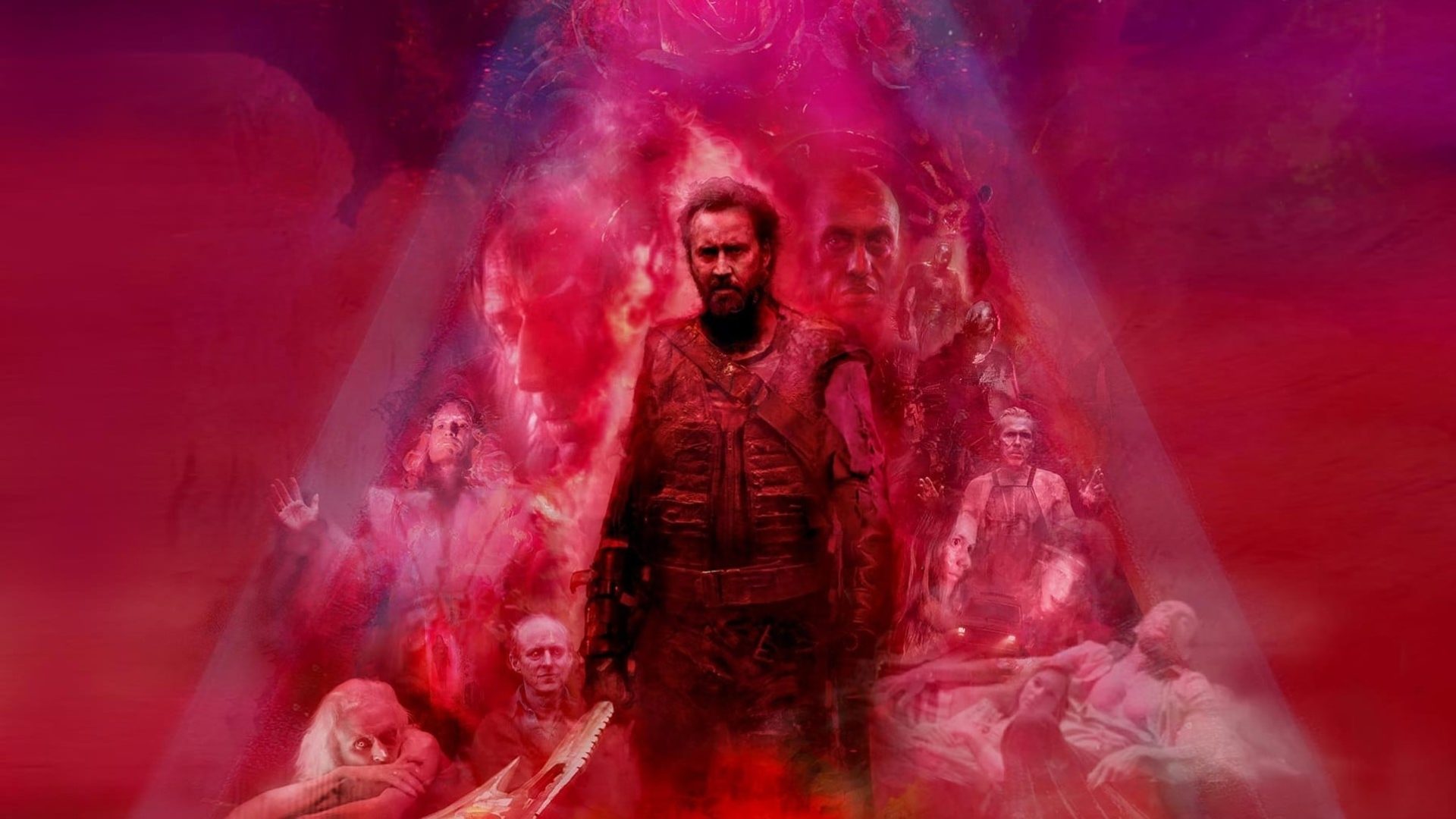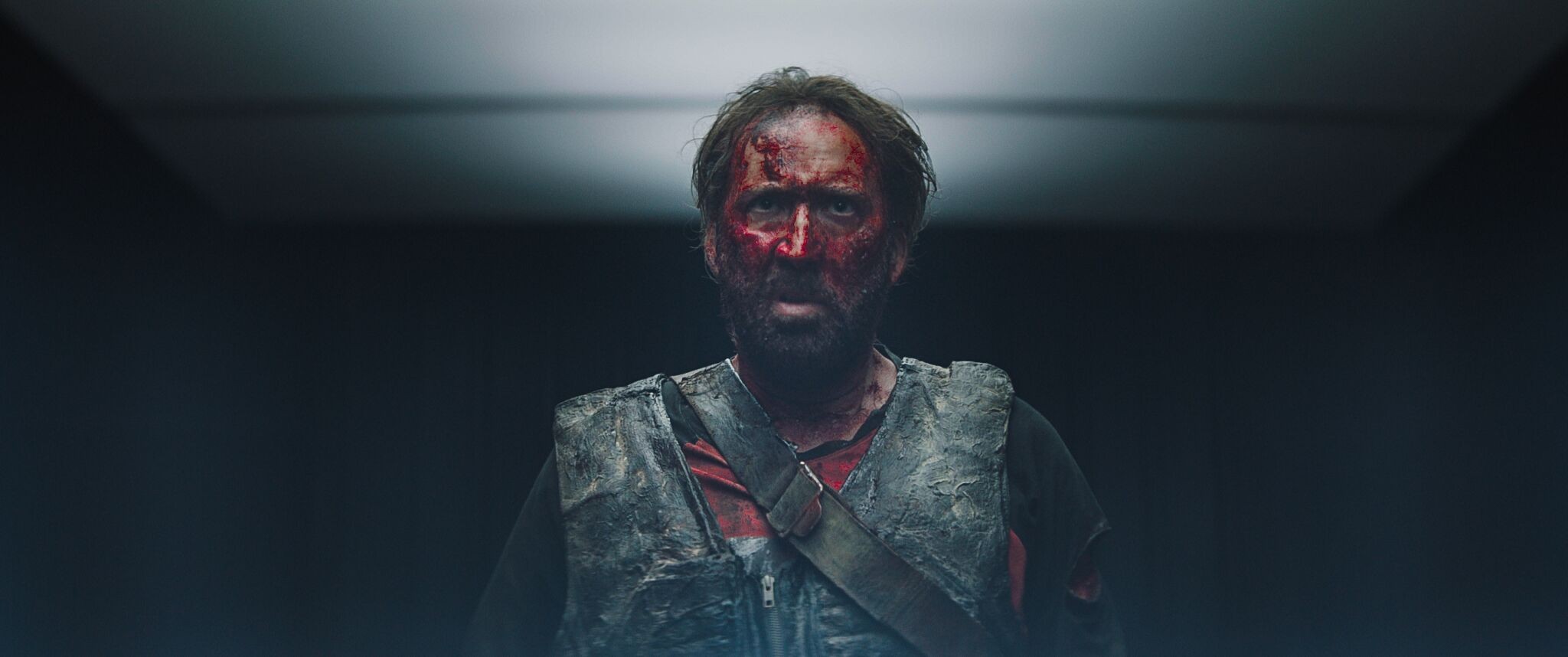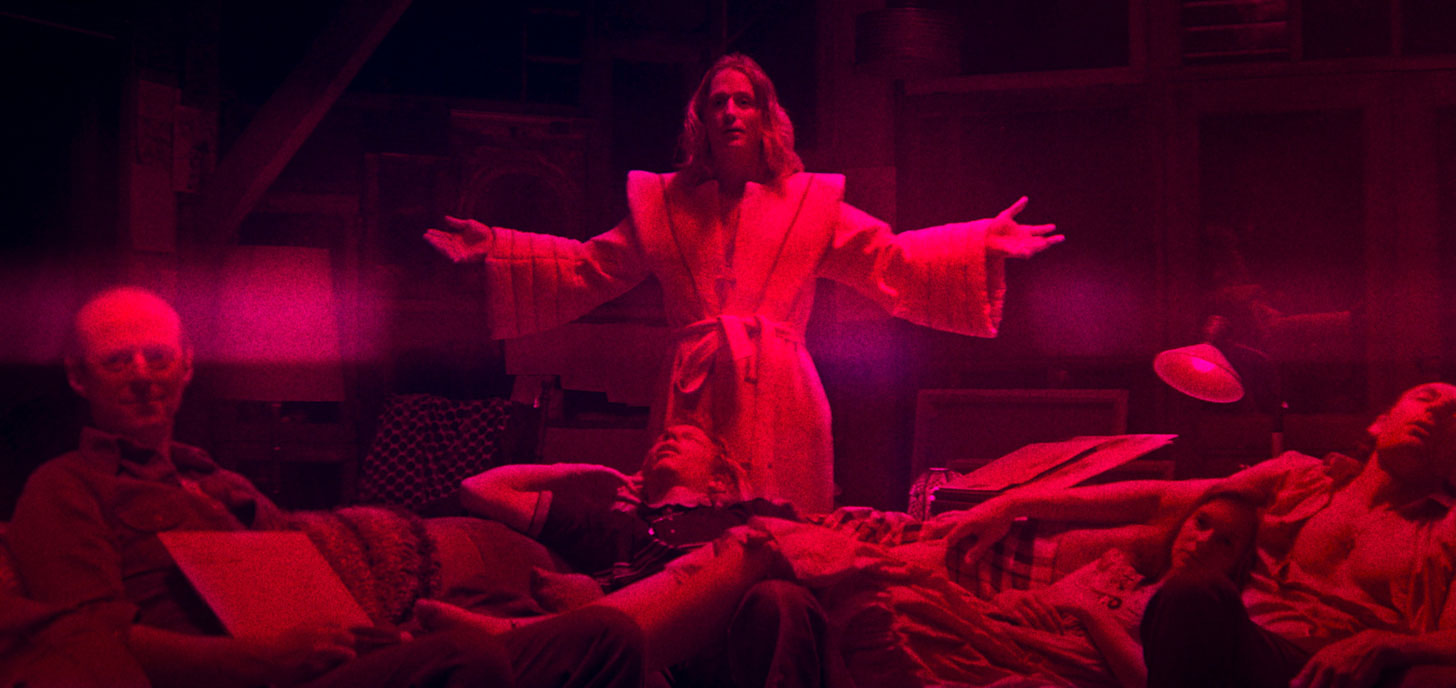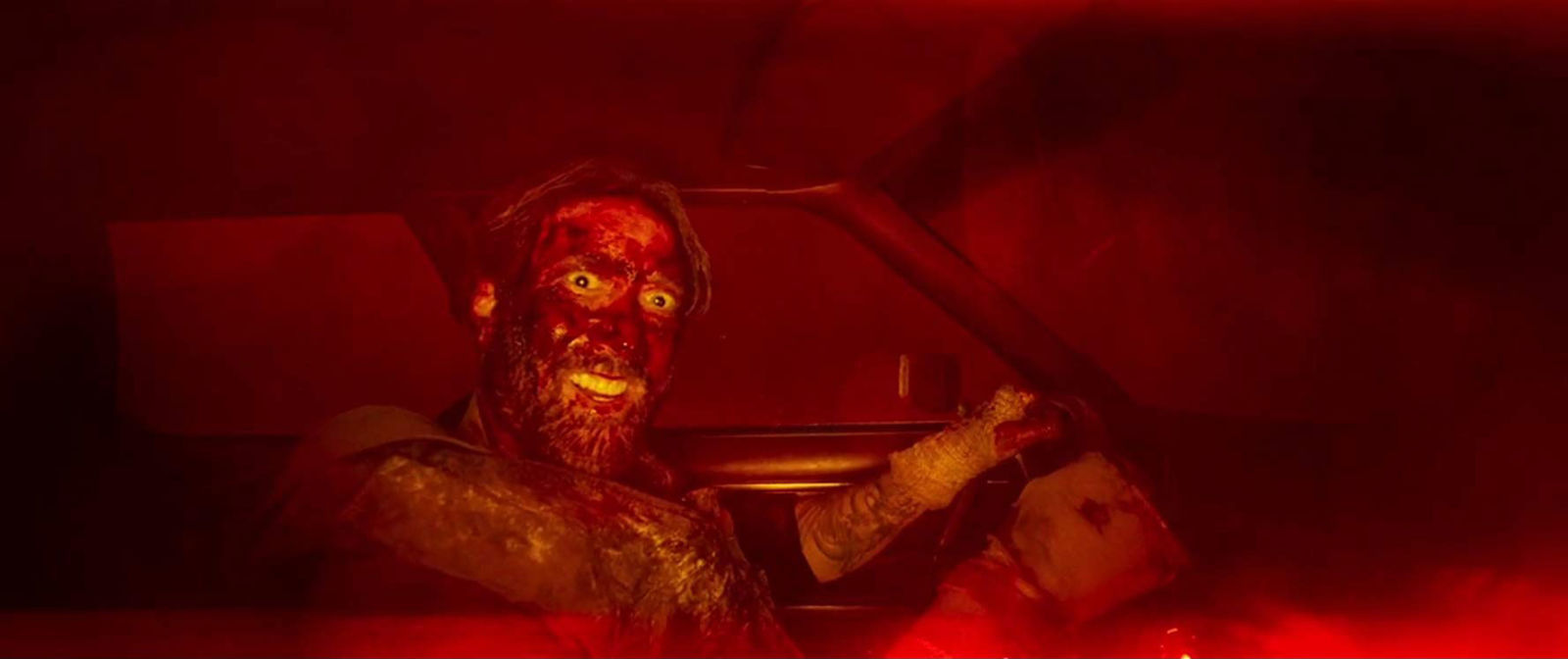
What if an iridescent horror-show was bathed in the hallucinatory sensation of a fever dream, but then mixed with the B-movie charm of Nic Cage at maximum cheese? In a nutshell, this is Mandy, an action-horror flick brought to life by director Panos Cosmatos. Set in the Pacific Northwest during the 80’s, a logger named Red Miller lives with his girlfriend Mandy Bloom in the comfortable obscurity of their cabin in the woods. But their peace doesn’t last, and after a cult perpetrates a traumatic series of event, Red sets out on a blood-soaked journey for revenge.
While it’s setup is exceedingly familiar, it’s in the execution that Mandy presents a wholly unique descent into insanity. Aesthetically speaking, it is as close as one could get to replicating the demonic hellscapes that defines the cover art of metal albums. At times it feels as though its film stock was dipped in blue and red ink, a barrage of primary colors hinting at the other-worldliness of this grounded setting. As the story plays out events become increasingly preposterous, with demonic bikers, battle axes, chainsaw fights, and mythical ocarinas. Through switching between a grainy 35mm camera and modern digital equipment, it creates a disarming balance between witnessing the horror in crystal clear shots, while also occasionally devolving into an impressionistic blur of film grain, further throwing the viewer off balance. Johan Johannsson, a talented composer who recently passed away, handled the synth tinged score. His haunting series of arrangements manages to aid in the generally unsettling tone, at first by hinting that something is wrong, and then by punctuating the gory crescendos.

While it’s first hour or so is largely dedicated to buildup, it’s through the overwhelmingly stylish direction that these scenes have all the hallmarks of a burgeoning nightmare or a bad trip. Constant fades, bizarre detours, and bad omens foreshadow the tragedies to come, and when things finally come to a head, the gonzo performances don’t disappoint. Linus Roache gives a truly deranged performance as the cult leader Jeremiah Sand, a medley of misogyny, narcissism, and psychosis. Nic Cage fully demonstrates his astounding range of variance between genuinely good acting, and good bad acting. His mild-mannered warmth in the early scenes is juxtaposed with his overwhelming pain, which then gives way to unhinged rage. This is most on display in an excruciating sequence shot immediately following the film’s turning point, in which he guzzles a bottle of vodka while oscillating between catatonic confusion, despair, and anger.
The blood bath that is the film’s second act is delivered with all the delicious verve of the pulp that inspired it, a combination of camp and horror that melds the two without feeling tonally discordant. Humor finds its way into the cracks of the anguish, with outrageous moments like Red’s genuine rage at his favorite shirt being damaged, or the appearance of the Cheddar Goblin marking a direct acknowledgement film’s inherent ridiculousness. Some scenes manage to be both funny and disarming at the same time, like when we are first introduced to the goonish but clearly deranged cult members, their menacing gazes undercut by their mullets and overbites.

The action sequences of the second half are coherent, a limited number of cuts presenting the life or death battles with clarity. The goofy extremes and ingenuity of these scenes combines with highly competent craft to make some genuinely great fight sequences. Cage’s raw fury becomes increasingly apparent, making it clear that although his vengeance allows him to perform impressive acts of violence, the cost is his humanity. His all consuming rage comes alive in these fight sequences, as he bitterly carries out his bloody deeds.
Mandy is an outlandish medley that is surprisingly coherent, full of action movie one liners, delicious Nic Cage ham, and quite a few gallons of blood. While it’s introductory helicopter tracking shots that depict the tops of pines trees evoke a vision of the Pacific Northwest that aligns with Twin Peaks, it actually has much more in common with the violent camp of The Evil Dead. And yet its execution is decidedly art-house, with ostentatious coloring choices, distinctive dreamlike editing, and somewhat many somewhat vague plot details that leave room for interpretation. It is a midnight Sundance entry that is shocking and oddly beautiful in equal measure.

Its greatest limiting factor is that at the end of the day it is still just a tale of revenge, a genre that feels increasingly obsolete as the filmic landscape becomes more diverse. But the articulation of this vision is so specific that despite its contrived core structure, all expectations are completely blown apart. Mandy is a truly wild ride, and while it’s ultra-violence and singular nature may rub some the wrong way, it has all the qualities of a standout cult film in the making. If you want to see a film that isn’t quite like anything you’ve seen before, Mandy is an easy recommendation.
Score: 8/10






